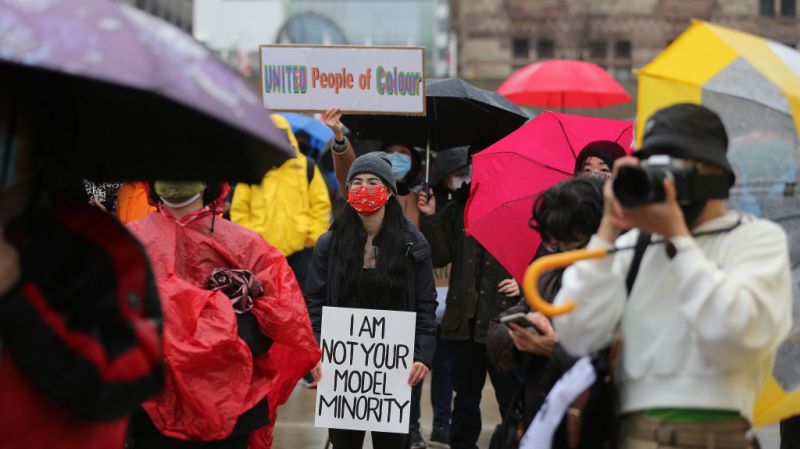Why the Model Minority is a Dangerous Myth
Asians in North America are burdened by a false narrative that erases their struggles

A few months ago, in May, we celebrated Asian Heritage Month — a time to recognize the profound contributions of Asians to Canadian society. Today, we should also acknowledge the complexity of their experience and push back against a stereotype that has long misrepresented and marginalized a diverse range of people: the myth of the “model minority.”
The term model minority first appeared in popular media in the 1960s to describe East Asians — primarily Japanese and Chinese North Americans — as having high educational attainment, high family median income and low crime rates. That label has since been applied to all Asians in North America.
More than half of native-born Asian Americans have heard of the model minority description. Among those who are familiar with it, four in 10 feel it is harmful.
Overlooked in the workplace
The narrative of the model minority portrays Asian Americans as uniformly successful and privileged. Yet the reality is far more complex. In reality, Asian Americans and Pacific Islanders (AAPIs) encompass more than 20 different ethnicities yet are often lumped into a single category.
This obscures wealth and status disparities within the community. Income inequality among AAPIs is high, with more than 10 groups, including Burmese, Hmong and Mongolians, experiencing poverty at rates equal to or worse than the national average.
The myth of the model minority erases the struggles of these underserved communities. It also perpetuates the harmful notion that AAPIs do not need support or advocacy to address systemic inequities.
The myth also undermines Asians in the workplace. Research shows that the depiction of Asians as diligent and hardworking has burdened them with additional responsibilities.
Unfortunately, their efforts often go unnoticed. Stereotypes portraying Asians as passive and unassertive also frequently lead to their talents being overlooked for managerial and leadership positions. Top executives in Fortune 500 companies of East Asian descent make less than their non-Asian counterparts.
Asians also often encounter unique barriers to upward mobility in the workplace — a phenomenon known as the “bamboo ceiling.” They may struggle to align with stereotypical Western models of leadership that include assertiveness and extraversion, and are disproportionately passed over for promotions, particularly into upper-level management.

Perpetual foreigners
Alongside the myth of the model minority is a related narrative that depicts Asians as perpetual foreigners — a manifestation of racism or xenophobia, where naturalized or even native-born Americans are viewed as outsiders because of their ethnic or racial background.
This myth has persisted despite generations of assimilation. Asians have often been viewed as outsiders since their arrival on North American shores in the mid-nineteenth century, labelled under the broad umbrella of “Orientals” and subjected to a variety of stereotypes.
As a result, Asians often face intrusive questions about their origins, such as “Where are you really from?” and “Your English is really good.” These and similar microaggressions can lead them to grapple with a sense of otherness that undermines their sense of belonging at work and beyond.
The belief that Asians are America’s “other” — compounded by historical prejudices such as the “yellow peril” and contemporary scapegoating during events such as the Covid-19 pandemic — fuels xenophobia and anti-Asian violence. This poses a real and immediate threat to the safety and well-being of Asian individuals and communities.
Time for a post-model-minority narrative
The model minority narrative not only implicitly denies remedies to systemic discrimination, but it also harms other marginalized and oppressed groups. It implicitly suggests that non-Asians and non-Asian Canadians cannot be considered model minorities.
Successful Asians are often presented as examples of what’s possible through hard work and grit — which masks the systemic barriers they, like other people of colour, must overcome to succeed. This, in effect, pits different racial groups against each other.
My hope is that people embrace a more inclusive and nuanced understanding of Asian experiences. A few ways to do this include amplifying the voices of underrepresented Asian communities, challenging stereotypes and advocating for policies that address the systemic inequities faced by all marginalized groups.
And instead of narrowly defining success in terms of elite credentials and earning power, Canadians might want to consider celebrating more diverse forms of achievement, too.
Eddy Ng is the Smith Professor of Equity and Inclusion in Business at Smith School of Business. A version of this essay was first posted on The Conversation.